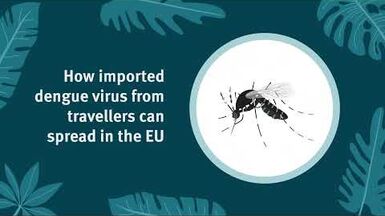Five infectious diseases accounted for 75% of reported cases in EU - summary report
Chlamydia infection, campylobacteriosis, salmonellosis, gonorrhoea and tuberculosis were the most commonly reported notifiable infectious diseases in the EU and EEA in 2014.
Chlamydia infection, campylobacteriosis, salmonellosis, gonorrhoea and tuberculosis were the most commonly reported notifiable infectious diseases in the EU and EEA in 2014 according to the executive summary of ECDC’s Annual epidemiological report . These diseases accounted for over 850,000 cases, 75% of the 1.1 million cases of infectious diseases reported overall. Over 6,700 deaths were reported for tuberculosis, HIV/AIDS, invasive pneumococcal disease, Legionnaires’ disease and listeriosis. Antimicrobial resistance continues to increase in gram-negative bacteria, including multidrug resistance and resistance to last-line drugs like carbapenems and, in certain parts of Europe, polymyxins.
“Reliable and correct surveillance data of infectious diseases are crucial sources of information that help policy makers and health experts in making informed decisions regarding public health actions,” says Dr Denis Coulombier, ECDC Head of Unit for Surveillance and Response Support. “It is therefore imperative that we continue to improve the timeliness and quality of surveillance data across the EU and EEA.”
For the first time, the annual epidemiological report is available as web pages. Each disease or health topic under the Centre’s surveillance has or will have its own chapter which, in conjunction with the ECDC Surveillance Atlas of Infectious Diseases, provides a concise epidemiological overview and downloadable maps, tables and graphs.







